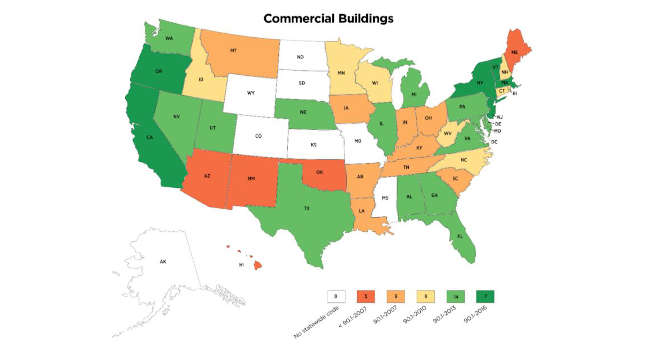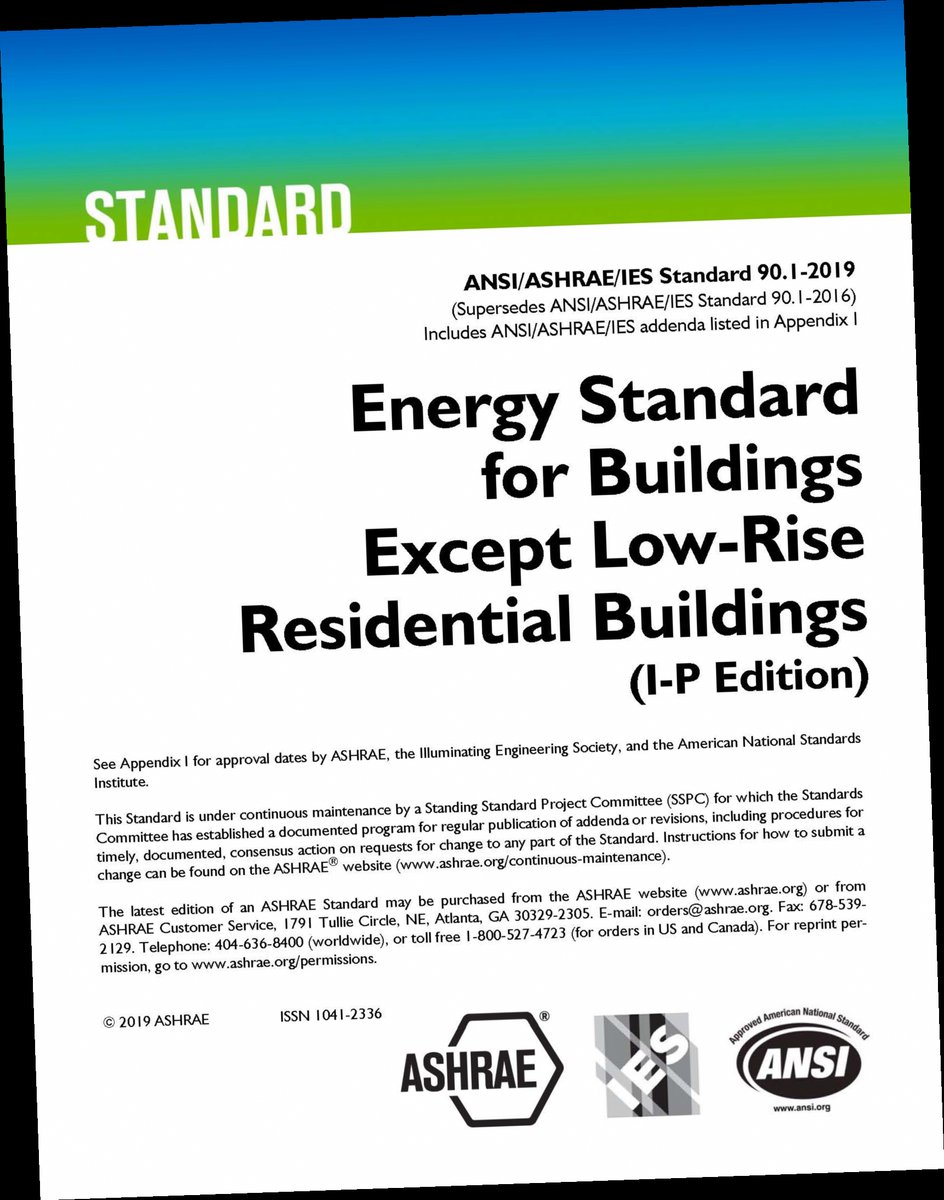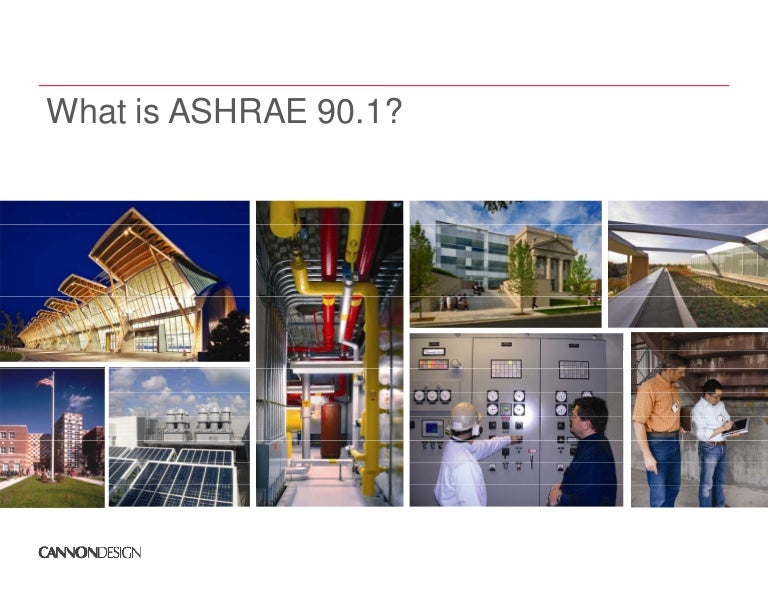
Performance-based compliance (aka the “energy cost budget method”) involves creating a computer simulation of the designed building and comparing it to a baseline model created as per the rules set forth in the standard. Prescriptive compliance involves meeting checklist of mandatory provisions while ensuring building component efficiencies meet or exceed required values given in the standard. Standard 90.1 has two methods for showing compliance termed “prescriptive” and “performance” paths.
#ASHRAE 90.1 HOW TO#
When considering how to comply, the standard provides flexibility. The building blocks of the standard are mandatory provisions that all complying projects must design to, prescriptive component efficiency values and guidelines for energy modeling-based compliance. The latter category, called “unregulated loads” includes plug loads such as computers and printers, information technology equipment, cooking equipment, elevators, laboratory equipment and many others. The standard regulates building thermal envelope, lighting systems, power systems and heating, ventilation and air conditioning systems, but does not regulate equipment and systems that are integral to the function of the building occupants. It is a document that demands careful study to effectively apply.

Structurally, Standard 90.1 varies in length from 188 pages for ASHRAE 90.1-2007 to 388 pages for ASHRAE 90.1-2016.
#ASHRAE 90.1 CODE#
The cumulative and methodical progress of Standard 90.1 has taken building design out of the era when no code requirements were placed on energy usage, and important building characteristics such as the inclusion of wall insulation were left up to the individual motivations of the design and construction teams. ASHRAE 90.1-2019 is published as the most recent version, but has not been analyzed as part of the research mentioned or extensively adopted. Successive versions of Standard 90.1, up to ASRHAE 90.1-2016, have reduced the energy consumed by a typical building designed to the standard by over 50% according to research done by Pacific Northwest National Laboratory. This split solidified Standard 90.1 as ASHRAE’s answer to how to regulate and evaluate energy efficiency in commercial buildings. Later, as part of the 1989 edition, ASHRAE 90 split into ASHRAE Standard 90.1: Energy Standard for Buildings Except Low-Rise Residential Buildings and ASHRAE 90.2: Energy-Efficient Design of Low-Rise Residential Buildings. HVAC Sizing reporting included for the building, plant, systems, zones and rooms.In 1975, ASHRAE 90-75: Energy Conservation in New Building Design was published as the first national energy code.Model in detail complex building geometry, HVAC or Renewable Energy systems.Use the built-in Quality Assurance to reduce errors and facilitate team collaboration.Gain feedback early on to maximize LEED Energy Credits.More accurately model ASHRAE 90.1 & 62.1 baseline systems using templates.Manage and edit data for all 5 models from one central file reducing input duplication and error.Automated link to AIA 2030 Challenge via Design Data Exchange (DDX) website.Automatically generates output reports for LEED PRM and ECB.Automatically performs Unmet Load Hours check.Automatically undertake simulations across all 5 buildings using Parallel Simulation Manager.Compare proposed and baseline buildings data input side-by-side prior to calculation.Automatically includes daylight simulation in proposed model and baseline models.Import room and thermal zone template data.Import and edit ASHRAE baseline prototypes and other pre-defined systems.Automatically create and size proposed HVAC systems (Including ASHRAE 62.1 ventilation).Automatically assign baseline constructions according to climate zone.Performs automatic rotation check to determine if 1 baseline or 4 rotated baseline models will be required.Optimal Start option for system operation allows automated determination of start-up time to reduce energy consumption.Instantly create all baseline models from proposed design model.GBCA moving towards JV3 performance based model using these standard ASHRAE systems Australia & NZ – ASHRAE 90.1 HVAC system prototypes important for the Industrial & Public Building and Healthcare Green Star protocols.


Middle East & Asia – LEED (USA) rating system very well known within the region, plus, both Estidama and The Masdar Approach reference and use ASHRAE 90.1.UK & Europe – LEED (USA) well known within the region while Italy has just implemented its own version.


 0 kommentar(er)
0 kommentar(er)
